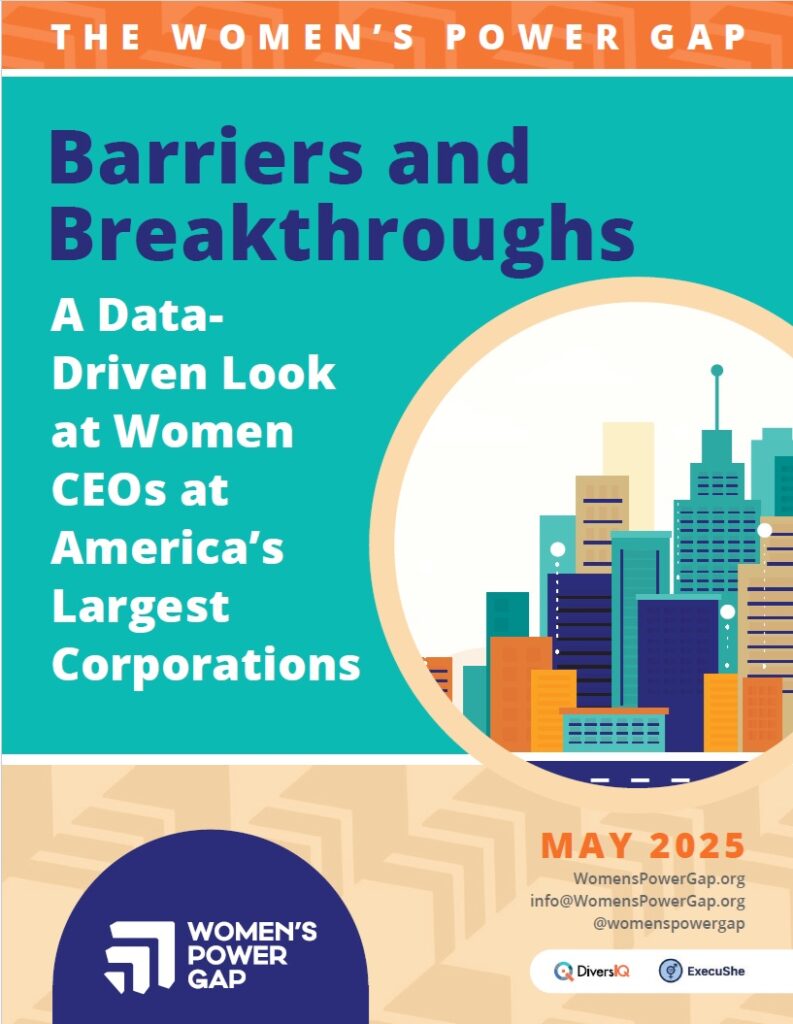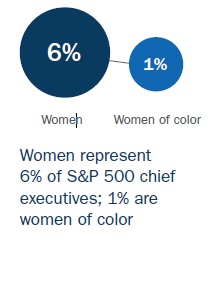
Our newest report examines the career trajectories of CEOs at S&P 500 companies. Among key findings: Women CEOs are just as, if not more, qualified than their male counterparts. While the typical path to the CEO role is similar across genders, the report reveals that women were 32% more likely to have taken an additional step serving as President before being appointed CEO. This puts to rest the notion that companies have had to lower standards to elevate women!
The Women’s Power Gap Initiative aims to dramatically increase the number of women leaders, from a diverse set of backgrounds, across prominent sectors of the economy.
The Initiative conducts research to measure the extent of the power gap and propose solutions to reach gender parity and fair representation of people of color at the top.
Each sector study is accompanied by a public dialogue and community conversation that not only highlights the issue, but also offers successful practices and policies to increase representation and inclusion.


For more than four decades, women have been earning the degrees, credentials, and experience to scale the leadership ladder. While we have experienced some progress diversifying boards of directors, women’s advancement to the top inside our major corporations and institutions has been glacial. Today, women represent only 6% of the chief executives of the S&P 500, and just 1% are women of color, according to a recent study by Catalyst. Why has progress inside our institutions been so slow? Efforts have largely focused on providing women and people of color professional development programs, mentors and sponsors, which can only take us so far. If we are to break the glass—or, as some prefer to say, the concrete—ceiling, we need to tackle institutional cultures that often undervalue less traditional leadership styles. To close the representation gap, which we at Eos Foundation call the Women’s Power Gap, efforts must focus on fixing the system, not the women. So where to begin?
Women account for 51.5% of the U.S. population, but are severely underrepresented in leadership positions. We define the Women’s Power Gap as the percentage of women in leadership subtracted from the percentage of men. The WPG is highlighted in three industries below. In 2021, these gaps are NOT acceptable. Join the effort for Gender Parity Now.
The Women’s Power Gap (WPG) Initiative was created by the Eos Foundation in 2018 to dramatically increase the number of women from diverse backgrounds among CEO and C-suite leaders nationally. We conduct and commission actionable research on prominent sectors of the economy, and measure the extent of the power and wage gaps at the company or institutional level to highlight those making fast progress, and those falling behind. Each report is accompanied by a public dialogue and community conversation highlighting the issue and offering practices and policies to increase representation and inclusion. Past reports include The Women’s Power Gap in Massachusetts Higher Education: Study and Rankings and The Women’s Power Gap in Corporate Massachusetts.
In 2021, the WPG took our work national. The Power Gap Among Top Earners at America’s Elite Universities, released in February 2021, was the first of two reports in partnership with the American Association of University Women (AAUW) examining compensation and top leadership among the country’s 130 major research universities (R1s as defined by the Carnegie Classification). A follow-up report, The Women’s Power Gap at Elite Universities: Scaling the Ivory Tower was released in January 2022.